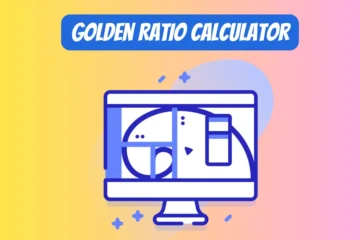Standard Deviation: –
Table of Contents
How to use this Variance to Standard Deviation calculator?
- Input Variance:
- Type the variance value you want to convert into the standard deviation.
- Perform the Conversion:
- Click the “Convert” button (the one with the arrow icon).
- The standard deviation corresponding to the entered variance will be displayed below the buttons.
- Reset the Tool (Optional)
- If you want to perform another conversion, click the “Reset” button (the one with the undo icon).
- This will clear the input field and the displayed standard deviation result.
- Copy the Result (Optional)
- If you want to copy the standard deviation result to the clipboard, click the “Copy” button (the one with the copy icon).
- A small message saying “Copied!” will appear next to the button, confirming that the result has been copied to the clipboard.
Practical Applications of Standard Deviation
Finance and Economics
- Risk Assessment: Financial analysts use standard deviation to assess the volatility or risk associated with an investment option.
- Portfolio Management: Helps in optimizing the asset allocation in an investment portfolio.
- Market Research: Used to understand consumer behavior, market trends, and price elasticity.
Medicine and Healthcare
- Clinical Trials: Standard deviation helps in analyzing the effectiveness of treatments or drugs.
- Quality Control: Used in laboratory tests to ensure the accuracy and reliability of results.
- Patient Monitoring: Used to understand the variability in different medical readings over time.
Engineering
- Quality Assurance: In manufacturing, it’s used to understand the consistency in the production of goods.
- Optimization: Engineers use it to fine-tune processes and systems for better performance.
Social Sciences
- Psychology: Used to understand the spread of behavioral traits in a population.
- Political Science: Pollsters use standard deviation to interpret the variability in public opinion.
Sports and Recreation
- Performance Analysis: Used to analyze the consistency and reliability of a player’s performance over time.
- Talent Scouting: Helps in evaluating the potential and consistency of emerging talents.
Environmental Science
- Climate Studies: Used to understand variability in temperature, rainfall, and other climatic factors.
- Conservation: Helps in analyzing the spread of species in a specific area.
Education
- Grading and Assessment: Helps in understanding the spread of grades among students.
- Educational Research: Used to analyze the effectiveness of different teaching methods.
Retail and Business
- Inventory Management: Helps retailers understand the variability in product sales.
- Customer Satisfaction: Used to analyze feedback and reviews from customers.
Data Science and Research
- Predictive Modeling: Used to understand the reliability of models.
- Data Cleaning: Helps in identifying outliers or errors in a dataset.
Basically, understanding the standard deviation of a dataset provides valuable insights into the distribution, spread, and reliability of the data, thereby helping in informed decision-making across multiple fields.
Understanding Standard Deviation: The Heartbeat of Data
Hey folks, have you ever wondered what that mysterious term “standard deviation” actually means? If you’ve ever dabbled in data analysis, finance, or even just a basic statistics class, you’ve probably bumped into it more than once. It’s one of those terms that sounds super complicated, but trust me, it’s actually quite straightforward once you get to know it. So, let’s demystify this statistical superstar together, shall we?
What’s the Big Deal About Standard Deviation?
First off, let’s talk about why you should even care. Imagine you’re trying to choose the best school for your kids, and you’ve got test scores from two schools. One school has average scores that are sky-high, but here’s the catch: the scores vary a lot. Some kids are absolute geniuses, while others are struggling. Another school has slightly lower average scores, but the scores are more consistent. Which one would you pick? Tough choice, right? That’s where standard deviation comes in, helping you understand this “spread” of scores.
So, What Exactly Is Standard Deviation?
In the simplest terms, standard deviation is a measure of how spread out the numbers in a data set are. It tells you how much individual data points deviate from the mean (or average), giving you a holistic view of the distribution. If the standard deviation is low, that means the data points are really close to the mean; if it’s high, they’re spread out over a wider range. It’s like knowing whether your friends are close-knit and tend to stick together, or are more of an adventurous bunch that likes to roam around.
The Nitty-Gritty: The Formula
Alright, let’s get into the heart of the matter: the formula. The formula for standard deviation is:
Hold on, don’t let your eyes glaze over just yet! I know it looks intimidating, but it’s just a series of simple steps bundled together. Here’s the breakdown:
| = | population standard deviation | |
| = | the size of the population | |
| = | each value from the population | |
| = | the population mean |
- Calculate the Mean (
) : Add up all the numbers in your data set and divide by the number of data points.
- Find the Differences: Subtract the mean from each number in your data set. This gives you
−
- Square the Differences: Square each of these differences. That’s where (
−
)2 comes from.
- Sum of Squares: Add up all of these squared differences.
- Divide by
: Divide the sum by the number of data points. This gives you the variance.
- Square Root: Finally, take the square root of that number to get the standard deviation (σ).
Practical Applications: More than Just Numbers
Understanding standard deviation isn’t just for math geeks or data scientists; it has real-world applications that touch our lives in surprising ways. From helping medical researchers understand the effectiveness of a new drug, to allowing financial analysts to assess market risks, the uses are endless. Even in education, teachers use it to analyze student performance, thus tailoring teaching methods for better academic results.
Wrapping it Up
So there you have it—standard deviation in a nutshell. It’s not just a random term or an obscure mathematical concept; it’s a vital statistic that helps us make sense of the world around us. It’s like a heartbeat for data, telling us how much variation exists and helping us make informed decisions. So the next time you hear someone throw around the term ‘standard deviation,’ you’ll not only know what they’re talking about, but you’ll also realize just how indispensable it truly is in our data-driven world.
Enjoyed using this? Check out our Descriptive Statistical Calculator next!









